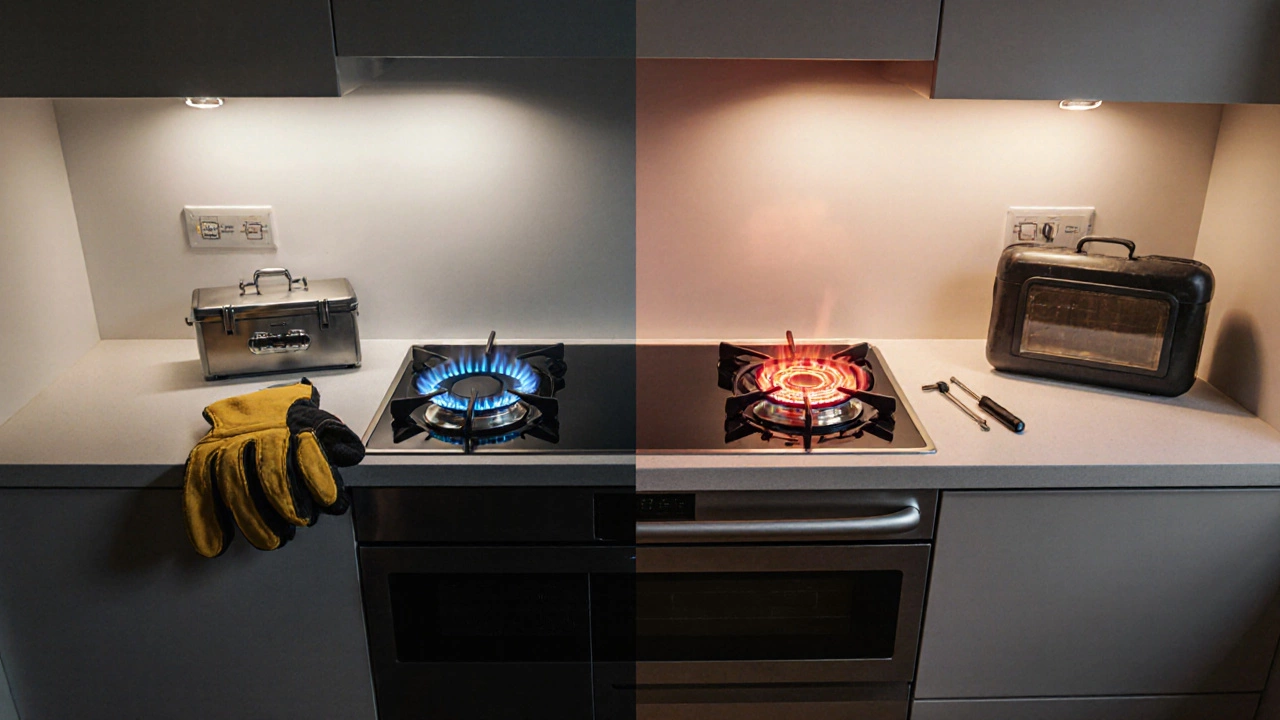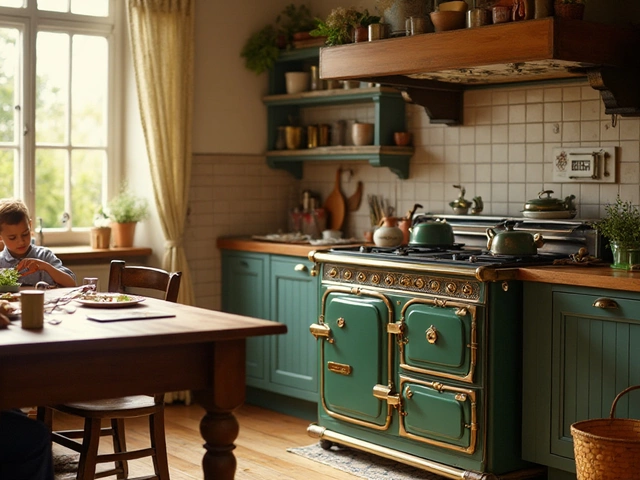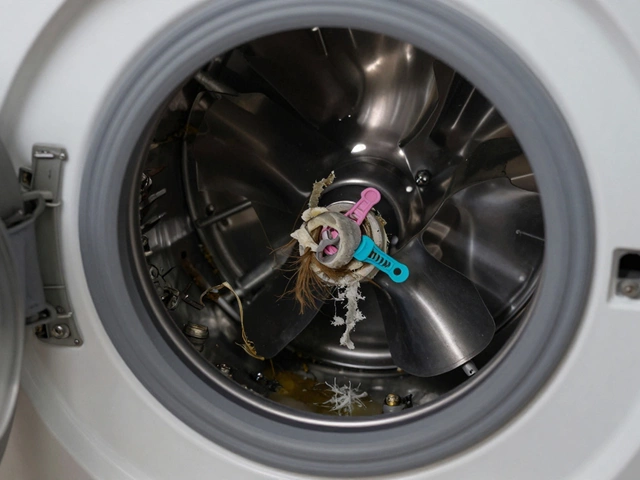Cooker Repair Cost Estimator
Quick Repair Cost Guide
Typical repair costs range from NZ$80 for simple fixes to NZ$350 for complex issues. Most repairs are cost-effective when they're under 30% of a new cooker's price.
Enter Your Cooker Details
Estimated Repair Cost
NZ$120 - NZ$250
cooker is a kitchen appliance that combines an oven and a hob, letting you bake, grill, and cook on the stovetop. If it’s not heating, making strange noises, or showing error codes, you’re probably wondering whether it can be fixed or if you need a brand‑new unit.
Quick Summary
- Most cooker problems are repairable, especially if caught early.
- Start with simple safety checks and visual inspections before calling a pro.
- Gas cookers and electric cookers have different weak points - know which parts to look at.
- Typical repair costs range from NZ$80 for a fuse replacement to NZ$350 for a full control‑board fix.
- Regular cleaning and annual servicing can double the life of your cooker.
Know Your Cooker: Gas vs. Electric
Understanding the core differences helps you target the right fix. Below is a quick side‑by‑side look.
| Feature | Gas Cooker | Electric Cooker |
|---|---|---|
| Common failure point | Igniter or gas valve | Heating element or thermostat |
| Typical repair cost | NZ$120‑NZ$250 | NZ$150‑NZ$300 |
| DIY friendliness | Medium - gas work needs certification | High - element swap is straightforward |
| Safety checks | Leak detection, flamemonitor | Electrical grounding, breaker test |
Typical Problems and What They Mean
Here are the most common symptoms and the parts usually at fault.
- No heat in the oven - often a blown thermostat or a faulty control board.
- Burner won’t ignite (gas) - the igniter may be cracked or the gas valve stuck.
- Electric hob stays off - the heating element or the safety switch could be tripped.
- Erratic temperature - a mis‑reading thermostat or loose wiring.
- Strange noises - fan motor wear, loose screws, or a failing compressor in some models.
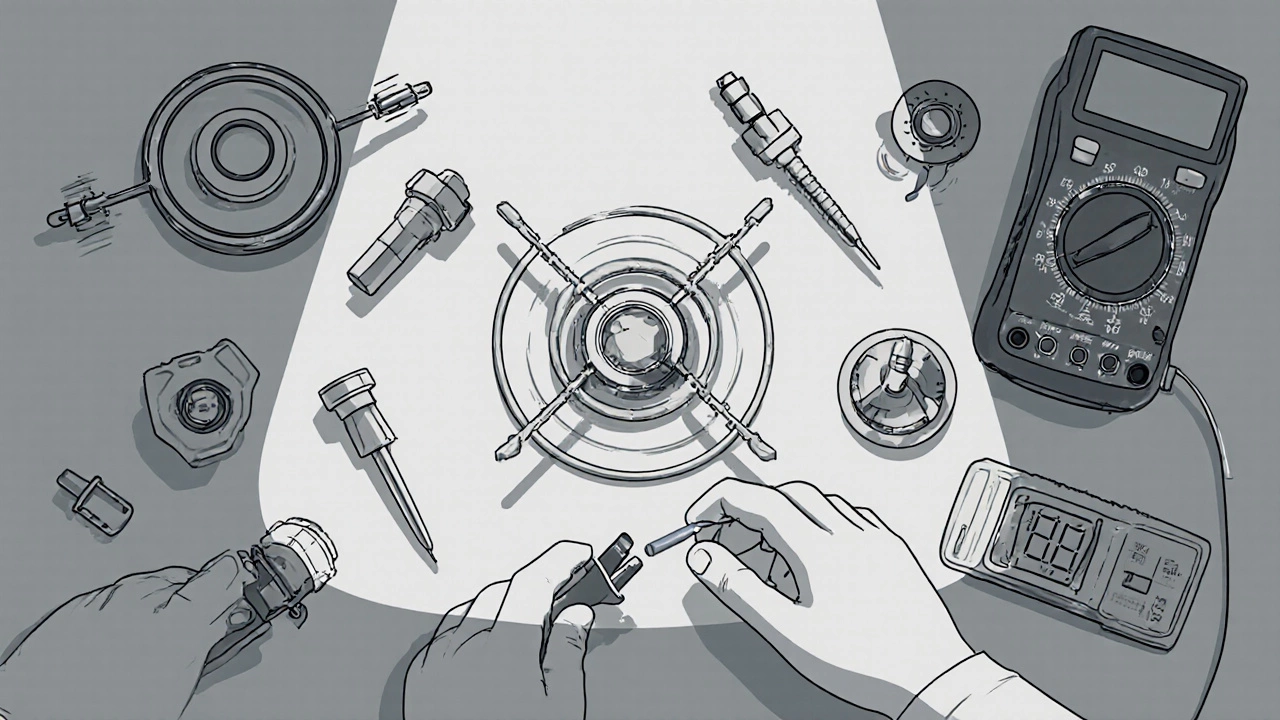
DIY Checks Before You Call a Pro
Safety first. Always disconnect power or turn off the gas supply before poking around.
- Verify power: plug another appliance into the same socket. If it works, the outlet’s fine.
- Inspect fuse/MCB: a tripped breaker is a quick fix - reset it and test.
- Look for visible damage: cracked igniter, burnt wiring, or leaking gas hoses.
- Clean the burners and oven vents: built‑up grime can cause overheating and false error codes.
- Run a diagnostic mode (if your model has one): check the manual for the key combo that triggers a self‑test.
If any step reveals a broken component, note the part number - it’ll speed up the quote process.
When to Call a Professional
Even a seasoned DIYer should step back when dealing with gas lines or high‑voltage parts. Here’s a rule of thumb:
- Any gas leak or smell of propane - shut off the gas valve and call a certified gas plumber.
- Control board failures or intermittent error codes - require a technician with proper diagnostic tools.
- Repeated issues after a repair - could indicate a deeper wiring problem that needs rewiring.
Choosing the right repair technician matters. Look for NZS4668 certification for gas work and a valid electrician’s licence for electric repairs.
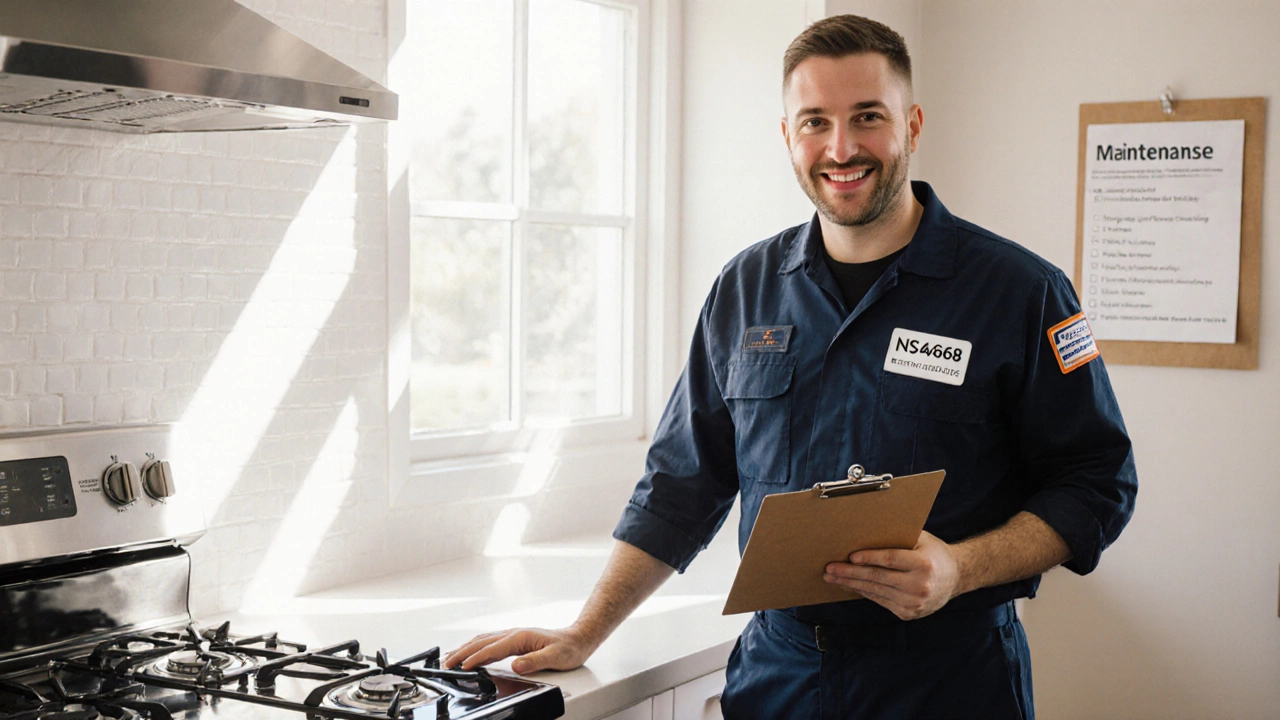
Cost Factors and Getting the Best Quote
Repair prices vary based on part availability, labour rates, and whether you need a service call fee.
- Simple part swaps (fuse, thermostat) - NZ$80‑NZ$150.
- Igniter replacement - NZ$120‑NZ$200 plus labour.
- Control board overhaul - NZ$250‑NZ$350.
- Emergency after‑hours call - an extra 20‑30% surcharge.
Ask the technician for a written estimate that breaks down parts, labour, and any travel fees. Compare at least three quotes before deciding.
Maintenance Tips to Keep Your Cooker Running Longer
Preventive care beats reactive repairs. Follow these habits:
- Wipe spills immediately - avoid sugary residues that caramelise and damage heating elements.
- Descale gas burners once a year with a vinegar‑water solution.
- Check the oven seal annually; a cracked gasket lets heat escape and forces the thermostat to overwork.
- Run a self‑clean cycle (if available) no more than every six months to prevent excessive build‑up.
- Schedule a professional service check every 2‑3 years - they’ll test the gas valve, pressure regulator, and electrical safety devices.
By staying on top of these tasks, you’ll likely avoid the most common expensive fixes.
Frequently Asked Questions
Can I replace a cooker’s heating element myself?
Yes, if you have a basic electric skill level. Turn off the mains, disconnect the old element, match the plug type, and secure the new one. Test it before reinstalling the oven door.
What does it mean when my gas cooker clicks but doesn’t light?
The spark igniter is working, but the gas valve may be shut or faulty. Check the gas supply, and if the valve doesn’t open, call a certified gas technician.
Is it worth fixing an old cooker or should I buy a new one?
If the repair cost is under 30% of a new unit’s price and the cooker is less than 10years old, fixing is usually smarter. Older models may lack energy‑efficiency ratings.
How often should I clean the oven’s thermostat?
A quick vacuum of dust every six months is enough. If you notice temperature swings, remove the thermostat cover and wipe it with a dry cloth.
Do I need a warranty to get a repair covered?
Most manufacturers honour a 12‑month parts‑only warranty. If you have an extended service plan, many repairs are free or heavily discounted.
Bottom line: most cooker hiccups can be sorted without a full replacement. A quick visual check, a few safety steps, and a call to a qualified technician when needed will keep your kitchen humming for years.
